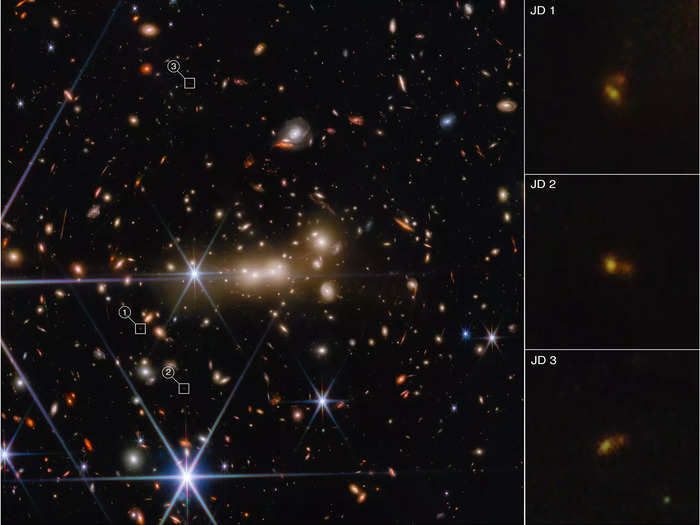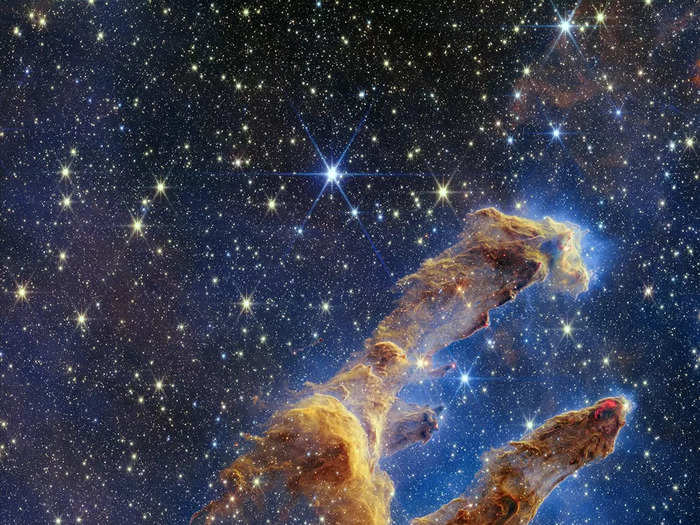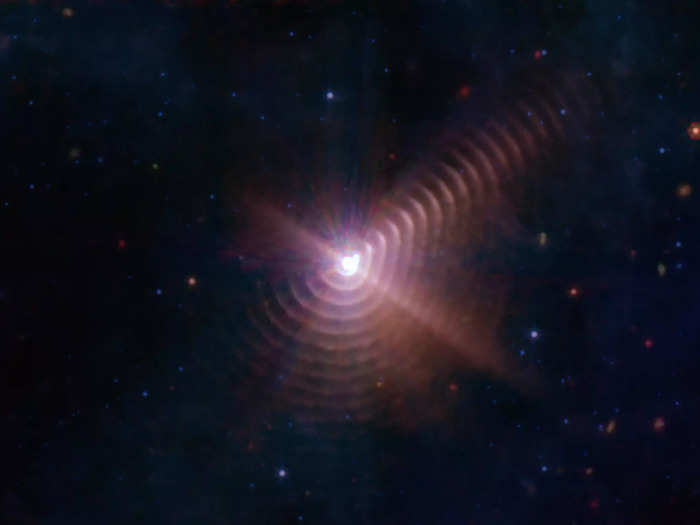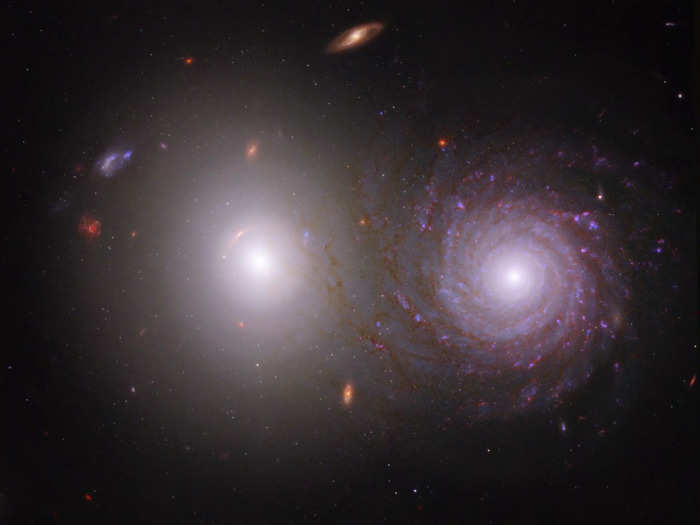NASA’s James Webb Space Telescope’s mid-infrared view of the Pillars of Creation.NASA, ESA, CSA, STScI, Joseph DePasquale (STScI), Alyssa Pagan (STScI)
- The James Webb Space Telescope on Friday released a new, mid-infrared view of the Pillars of Creation.
- The image allowed scientists to view how much cosmic dust — needed to create stars — is in the region.
The James Webb Space Telescope released a new, mid-infrared view of the 'Pillars of Creation' on Friday, revealing two types of stars and giving researchers the chance to study the cosmic dust in the massive columns of gas.
NASA’s James Webb Space Telescope’s mid-infrared view of the Pillars of Creation. NASA, ESA, CSA, STScI, Joseph DePasquale (STScI), Alyssa Pagan (STScI)
The new photos included a cluster of stars from 5.6 billion light-years away. The light from the MACS0647-JD system is bent and magnified by the massive gravity of galaxy cluster MACS0647.
The massive gravity of galaxy cluster MACS0647 acts as a cosmic lens to bend and magnify light from the more distant MACS0647-JD system. It also triply lensed the JD system, causing its image to appear in three separate locations. These images, which are highlighted with white boxes, are marked JD1, JD2, and JD3; zoomed-in views are shown in the panels at right. In this image from Webb’s Near Infrared Camera (NIRCam) instrument, blue was assigned to wavelengths of 1.15 and 1.5 microns (F115W, F150W), green to wavelengths of 2.0 and 2.77 microns (F200W, F277W) and red to wavelengths of 3.65 and 4.44 microns (F365W, F444W). SCIENCE: NASA, ESA, CSA, Dan Coe (STScI), Rebecca Larson (UT), Yu-Yang Hsiao (JHU) IMAGE PROCESSING: Alyssa Pagan (STScI)
Earlier this month, the newest photos of the 'Pillars of Creation' were released, revealing a sky full of stars previously unseen by weaker telescopes.
The Pillars of Creation are set off in a kaleidoscope of color in NASA’s James Webb Space Telescope’s near-infrared-light view. The pillars look like arches and spires rising out of a desert landscape, but are filled with semi-transparent gas and dust, and ever changing. This is a region where young stars are forming – or have barely burst from their dusty cocoons as they continue to form. NASA, ESA, CSA, STScI; Joseph DePasquale (STScI), Anton M. Koekemoer (STScI), Alyssa Pagan (STScI).
A side-by-side comparison shows the additional detail revealed by the James Webb Space Telescope, compared with the Hubble Space Telescope's image from 2014.
NASA's Hubble Space Telescope made the Pillars of Creation famous with its first image in 1995, but revisited the scene in 2014 to reveal a sharper, wider view in visible light, shown above at left. A new, near-infrared-light view from NASA’s James Webb Space Telescope, at right, helps us peer through more of the dust in this star-forming region. The thick, dusty brown pillars are no longer as opaque and many more red stars that are still forming come into view. NASA, ESA, CSA, STScI; Joseph DePasquale (STScI), Anton M. Koekemoer (STScI), Alyssa Pagan (STScI).
Cosmic dust in the sky created a ripple that looks like tree rings, visible around Wolf-Rayet 140, a binary star system.
Shells of cosmic dust created by the interaction of binary stars appear like tree rings around Wolf-Rayet 140. NASA, ESA, CSA, STScI, NASA-JPL, Caltech
Near-infrared light from Webb, and ultraviolet and visible light from Hubble, show "interacting" galaxies that are actually very far apart.
This image of galaxy pair VV 191 includes near-infrared light from Webb, and ultraviolet and visible light from Hubble. NASA, ESA, CSA, Rogier Windhorst (ASU), William Keel (University of Alabama), Stuart Wyithe (University of Melbourne), JWST PEARLS Team, Alyssa Pagan (STScI)






